In our last newsletter we asked you to send us your suggestions for the “best reads” of research on forests, trees and agroforestry from last year. You presented us with an interesting selection of papers and topics that is hopefully inspiring to others. The post below is original content from the scientists.
We encourage you to continue sending us your tips whenever you are especially pleased with a work you or your colleagues were involved in.
Empowering smallholders in Kenya
Genetic diversity, fruit trees and restoration
Climate, emissions and governance
Landscapes, dry forests and big data
Natural resources, forest certification and inclusive green growth
Empowering smallholders in Kenya
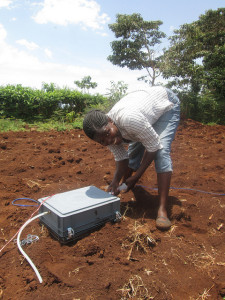
Fergus Sinclair, coordinator of the CGIAR Research Program on Forests, Trees and Agroforestry Flagship Livelihood Systems wants to give these three publications a special consideration:
The first paper in the list already won an award at ICRAF’s science week for challenging orthodoxy, Sinclair writes about his choice. “It reveals that farmers in Western Kenya adopt a wide variety of tree species in a wide variety of farm and landscape niches and explains why different farmers chose different options in relation to their resource endowments.”
The second paper is likely to become the most prominent. It proposes a new unified theory of empowerment and applies this to devolution of forest governance in Kenya, showing imbalances in transfer of powers and control of local forest management bodies, together with suggestions on what can be done to improve this.
Genetic diversity, fruit trees and restoration
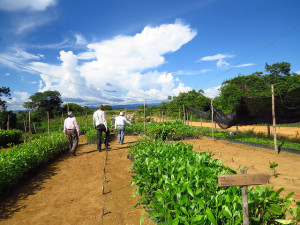
Photo: Bioversity International/C.Alcazar Caisedo
Laura Snook, coordinator of FTA Flagship 2 on tree resources, wants to draw attention to several publications that are exemplary for managing tree resources. She argues that high levels of download of publications reveal not only the importance of these topics, but also the value of making available information at no cost, through the internet.
Of particular importance is the book Genetic considerations in ecosystem restoration using native tree species, co-published with FAO, which covers theoretical and practical issues in ecosystem restoration, one of the major international challenges and opportunities of our time, a goal which countries around the world have pledged to attain.
This review highlights the value of using native species, which, among other things, promote more biodiversity than exotics. It explains the importance of matching species to site, the challenges of sourcing seed and the need to ensure that seed sources encompass sufficient genetic diversity to allow restored forests to become self-sustaining, able to regenerate successfully and survive under projected changes in climate.
Tropical fruit tree species and climate change is a publication that analyzes the impact of climate change on fruit trees that are important for nutrition and commerce, and how farmers can adapt their production.
Conservation of fruit tree diversity in Central Asia: policy options and challenges, also available in Russian, summarizes the factors that threaten local diversity of fruit trees (apple, apricot, peach, pear, plum, grape, almond, pistachio, pomegranate, and fig) in the five Central Asian countries where their diversity is highest (Kazakhstan, Kyrgyzstan, Tajikistan, Turkmenistan, and Uzbekistan). It outlines measures for developing and implementing policies to ensure their conservation and future availability.
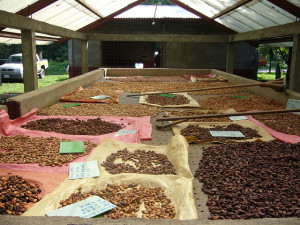
Supplying new cocoa planting material to farmers: a review of propagation methodologies provides complete information on methods for propagating cacao, a crop produced almost entirely by millions of small farmers in developing countries.
Cocoa is also the focus of an open access article in PLoS Present Spatial Diversity Patterns of Theobroma cacao L. in the Neotropics Reflect Genetic Differentiation in Pleistocene Refugia Followed by Human-Influenced Dispersal on the genetics of 939 cacao trees from different locations across South America. The article describes how their diversity reflected past changes (ice ages) as well as human activities. It also discusses the implications of these results for future germplasm collection and conservation in situ, on farm and ex situ.
Two additional articles evaluated methods for prioritizing which fruit tree populations were most important to conserve, by using genetic analyses and climate projections (6), in one case for Conservation Priorities for Prunus africana Defined with the Aid of Spatial Analysis of Genetic Data and Climatic Variables
and in another, for cherimoya in South Africa: Mapping Genetic Diversity of Cherimoya (Annona cherimola Mill.): Application of Spatial Analysis for Conservation and Use of Plant Genetic Resources.
These methods are of wide interest because they can be applied to other species as well. Since these and many other fruit producing tree species that are important for nutrition and livelihoods are only semi-domesticated, or are harvested from the wild, knowing the extent and distribution of their diversity is important not only to guide conservation, but also to highlight the potential to select and domesticate individuals with preferred traits, something which has not yet been done for most tree species.
Climate, emissions and governance
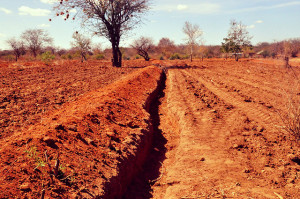
Lou Verchot, former Director, Forests & Environment Research at the Center for International Forestry Research (CIFOR), has two recent papers that he is very pleased with and would like to see considered.
The first one Reviews and syntheses: Soil N2O and NO emissions from land use and land use change in the tropics and subtropics: a meta-analysis by Jeffrey van Lent answers a long-standing question pretty definitively.
In the early 1990s, Flavio Luizão published a paper on Amazonian pastures that received low doses of fertilizer, which showed elevated N2O emissions and they suggested that tropical deforestation might lead to 1Tg of extra N2O emission to the atmosphere.
Michael Keller presented another paper that showed short-lived N2O pulse in a chronosequence. For a while, global N2O budgets included Luizão’s number. Eric Davidson sent me to the Amazon to make some measurements and he sent two other postdoctoral students to Costa Rica and Puerto Rico and some of our results upheld Keller et al., and supported the hole-in-the-pipe model.
We also attempted a global assessment using the Trace Gas Network (TRAGNET), that again supported HIP, but it was equivocal on land-use change effects. Many of us have been working over the past 20 years to build up better understanding of temporal and spatial variations in emissions.
Jeffrey van Gent’s paper provides a rigorous assessment of the data gathered from all corners of the tropics, quantified the average impact of land use change on these emissions, looked at the robustness of several theories of spatial and temporal variation, and answered the question about land-use change that we set out to answer over 20 years ago, pretty definitively.
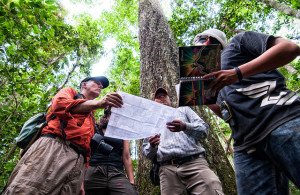
The second paper Decadal covariability of Atlantic SSTs and western Amazon dry-season hydroclimate in observations and CMIP5 simulations, by Katia Fernandes opens up the possibility of predicting climate change and climate variability at decadal time scale, and in this respect it is ground-breaking.
When Walter Baethgen presented about decadal climate variability to the FTA group in 2012, I asked whether the variations were predictable. He felt that beyond the knowledge that drought years and pluvial years tend to occur closer to each other in time than would be expected if it were truly a random process, he was pessimistic that we could predict at decadal time scales.
Katia Fernandes’s paper overturned this judgement and showed that drought/pluvial frequency in the Western Amazon region was controlled by the north-south gradient in sea surface temperature, which varies slowly over the course of decades. Using this index, one could predict the probability (frequency) for a given decade of droughts/pluvials. The paper also suggested that long-term climate change affected the severity of recent droughts in the region.
Maria Brockhaus, senior scientist with CIFOR, has special praise for Transaction costs, power, and multi-level forest governance in Indonesia (Gallemore et al. 2015). Published in Ecological Economics, it is speaking to a highly relevant topic, namely power and transaction costs in multilevel governance systems, when participating in larger policy processes such as REDD. It represents a complex analysis, as we combined two datasets from different levels, and employed highly advanced methods for analysis such as Exponential random graph models (ERGM).
The second paper, Deadlock or Transformational Change? Exploring Public Discourse on REDD+ across Seven Countries by Di Gregorio et al. 2015, published in Global Environmental Politics. This paper is a fascinating multi-country comparative analysis and investigates who and why or why not speaks transformational language in the REDD+ policy arena. It reflects a very unique dataset from the GCS project, which incorporates seven countries and multiple years of data.
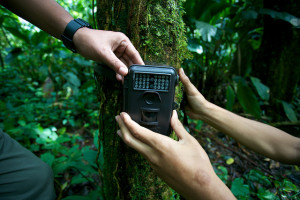
Martin Herold from research partner Wageningen University, Netherlands, proposes two papers on forest monitoring and deforestation. The first one is Assessing change in national forest monitoring capacities of 99 tropical countries by Erika Romijn et al., which revealed a marked improvement in national forest monitoring capacity in tropical countries over the past decade.
We analyzed data from 99 countries in the tropics and sub-tropics of the UN Food and Agriculture Organization’s (FAO) most recent Global Forest Resources Assessment (FRA) to evaluate each country’s ability to monitor its overall change in forest area.
Also assessed were countries’ capacities to carry out on-the-ground studies of the species and number of trees, forest biomass, soils, and other factors, and their ability to report on the different forest carbon pools, rating capacities on a scale from “very good” to “low.”
A comparison with findings from 10 years ago revealed big improvements. In 2005, 69% of the assessed tropical forests had “good” or “very good” monitoring and remote sensing capacities of forest area change. This portion increased to 83% in 2015, covering nearly 1700 million hectares of forests in 2015. Ability to conduct field-based inventories also increased, from 38% in 2005 to 66% in 2015.
Improvements were also seen country by country. In 2015, 54 of the 99 countries had good or very good forest area change monitoring, up from 37 in 2005. That means these countries were able to produce their own forest change maps. Bottom line: the investments and willingness of countries to improve their national forest monitoring systems has significantly increased in the previous years.
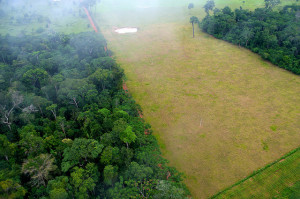
The second one, Land use patterns and related carbon losses following deforestation in South America, by Niki de Sy et al., provides the first systematic study on land use patterns and related carbon losses following deforestation in South America. The paper quantifies proximate drivers of deforestation and related carbon losses in South America based on remote sensing time series in a systematic, spatially explicit manner.
Deforestation areas were derived from the 2010 global remote sensing survey of the FAO Forest Resource Assessment. To assess proximate drivers, land use following deforestation was assigned by visual interpretation of high-resolution satellite imagery.
To estimate gross carbon losses from deforestation, default Tier 1 biomass levels per country and eco-zone were used. Pasture is the dominant driver of forest area (71.2 %) and related carbon loss (71.6 %) in South America, followed by commercial cropland (14 % and 12.1 % resp.).
Hotspots of deforestation due to pasture occur in northern Argentina, western Paraguay, and along the arc of deforestation in Brazil were they gradually move into higher biomass forests causing additional carbon losses. Deforestation driven by commercial cropland increased in time, with hotspots occurring in Brazil (Mato Grosso), Northern Argentina, eastern Paraguay and central Bolivia.
Infrastructure, such as urban expansion and roads, contributed little as proximate driver of forest area loss (1.7 %).
The paper contributes to the understanding of drivers of deforestation and related carbon losses in South America, which are comparable at the national, regional and continental level. In addition, it supports the development of national REDD+ interventions and forest monitoring systems, and provides valuable input for statistical analysis and modeling of underlying drivers of deforestation.
Landscapes, dry forests and big data

Meine van Noordwijk, chief science adviser at the World Agroforestry Centre and FTA Flagship 3 coordinator, shared a comprehensive selection of publications from his stomping ground, starting with Climate-Smart Landscapes: Multifunctionality In Practice.
The book gives an overview of the search for landscape multifunctionality, in concepts and in practical examples of work on the ground. It has been well received by the practitioner and educational communities involved, for “setting a high standard of analysis, providing substance to terms that have become popular but are at risk of losing meaning”.
For a long time the debate on payments for ecosystem services has been seen as dealing with a trade off between ‘efficiency’ (economic, technical orientation) and ‘fairness’ (social, rights-oriented approach). In a major synthesis of ten years of action research, the paper Fairly efficient, efficiently fair: Lessons from designing and testing payment schemes for ecosystem services in Asia argues that there is a middle-ground in this debate, and that most of what actually works is best described as a form of negotiated co-investment, rather than Payment for Ecosystem Services, as originally defined.
Linking knowledge with action is now known as ‘boundary work’ and needs to deal with multiple perspectives on credibility, salience and legitimacy. The paper Boundary work: Knowledge co-production for negotiating payment for watershed services in Indonesia reviews lessons learnt across watersheds in Indonesia, where negotiations helped overcome serious conflicts through various forms of co-investment.
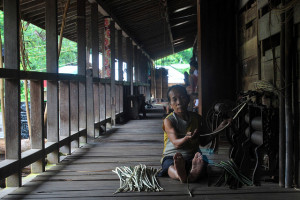
©Center For International Forestry Research/Yayan Indriatmoko
The concept of ‘indigenous’ has become widely accepted as basis for specific concerns and rules in forest policy development, but it has complex roots itself. The paper Self-Identification of Indigenous People in Post-Independence Indonesia: A Historical Analysis in the Context of REDD+ reviews where and how the way some people link to ‘territories’ became acceptable as part of this discourse, but how other groups, without such clear links were disadvantaged. A nuanced perspective on common but differentiated responsibility is called for.
Part of the literature attributes a strong inclination to conserving environmental integrity to women rather than men. The paper Land use change and shifts in gender roles in central Sumatra, Indonesia describes empirical evidence from Sumatra contrasting with that hypothesis: women were more inclined to engage with external oil palm investment in their landscapes then men, when tested separately in a role-play simulation game of landscape dynamics. The debate continues…
The long-term changes in soil carbon stocks due to conversion of forests or grasslands to oil palm plantations remain unclear, with some studies claiming increases, and other decreases. The paper Carbon neutral? No change in mineral soil carbon stock under oil palm plantations derived from forest or non-forest in Indonesia is based on the largest data set systematically collected across oil palm plantations in Indonesia. It shows that in the long term carbon neutrality can be achieved where good agricultural practices are implemented.
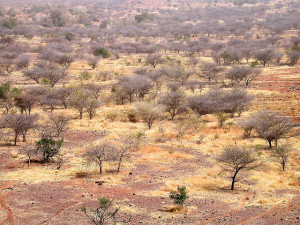
Photo: Daniel Tiveau/CIFOR
Terry Sunderland, Principal Scientist with the Center for International Forestry Research (CIFOR), found “the best example of the landscape approach in the literature with A situational analysis of Cameroon’s Technical Operation Units (TOUs) in the context of the landscape approach: critical issues and perspectives.
Two papers using “big data” should also be considered, because they represent the type of broad scale of scientific comparison within the CGIAR, he argues.
- An integrated pan-tropical biomass map using multiple reference datasets. Global Change Ecology.
- How many tree species exist in tropical forests?
Fittingly, his tip How many tree species exist in tropical forests? is also one of the most downloaded papers, listed below.
And lastly, Sunderland likes a paper on forests, biodiversity and food security:
Strategies to improve diets with wild and cultivated biodiversity from across the landscape.
Samson Foli, Associate Professional Officer at CIFOR, suggests just one publication, but one that in his opinion “underpins the direction, which FTA research should be taking”.
Global dry forests: a prologue, he argues, is relevant in addressing the urgent need for research on protecting dry forests at a global scale. “Dry forests are under-researched even though they encompass a significant amount of the tropical forest cover,” he writes.
“The paper highlights the importance of dry forest research due to the socio-economic relevance of its resources as food, fodder and safety net for the people living in such ecosystems.”
Natural resources, forest certification and inclusive green growth
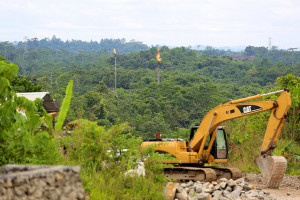
Pablo Pacheco, coordinator of the Flagship on Global Governance, Trade and Investment of the CGIAR FTA wants to highlight three papers from his research area.
A major debate on sustainable development is related to the economic and environmental implications of land-based investments. A paper focused on natural resource privatization in Sub-Saharan Africa and the challenges for inclusive green growth, argues that, since natural resource endowment has long been the primary source of comparative advantage for most African economies, natural resource-based investments may play a significant role in shaping the development of ‘inclusive green growth’ (IGG). This paper stresses that realizing meaningful IGG in Africa requires to deviate from existing development trajectories, which requires of transformative legal, institutional and economic reform.
Sustainability standards are an important effort to advance towards sustainable management of natural resources, and particularly forest management. While these initiatives represent opportunities, they also face limits to deliver the outcomes they promise, and their outcomes have to be seen in their interactions with state regulatory frameworks. The paper on forest certification and legality initiatives in the Brazilian Amazon: lessons for effective and equitable forest governance suggests that efforts focusing on the timber supply chain are more effective and favor large producers and concentrated supply chains destined for external markets, while inhibit local benefit-capture, stressing the importance to prioritize the generation of local benefit from locally adapted production systems.
Another important debate on global trade and sustainability relates to the role that corporate governance has on the uptake of sustainability standards. An insightful paper on deciphering Corporate Governance and Environmental Commitments among Southeast Asian Transnationals: Uptake of Sustainability Certification suggests that financial factors, such as ownership structure and flexibility in decision-making, may have a fundamental role in understanding the adoption of sustainable standard systems in the corporate sector. This is based on the analysis of four major Asian agribusiness transnationals comprising about 931 companies. In addition, this paper explores as a way forward the convergence of environmental sustainability with long-term family business sustainability.
Further recommendations come from Ramni Jamnadass, Global Research Program leader at ICRAF:
Current and Future Fire Regimes and Their Influence on Natural Vegetation in Ethiopia
Climate analogs for agricultural impact projection and adaptation: a reliability test
Useful tree species for Eastern Africa: a species selection tool based on the VECEA map. Version 2.0
Tree Seed and Seedling Supply Systems: A Review of the Asia, Africa and Latin America Models
Understanding the Roles of Forests and Tree-based Systems in Food Provision
Forest Landscape Restoration as a Key Component of Climate Change Mitigation and Adaptation
Loss of Genetic Diversity of L. through Domestication: Implications for Its Genetic Improvement
Genetic resources of teak – strong genetic structure among natural populations











